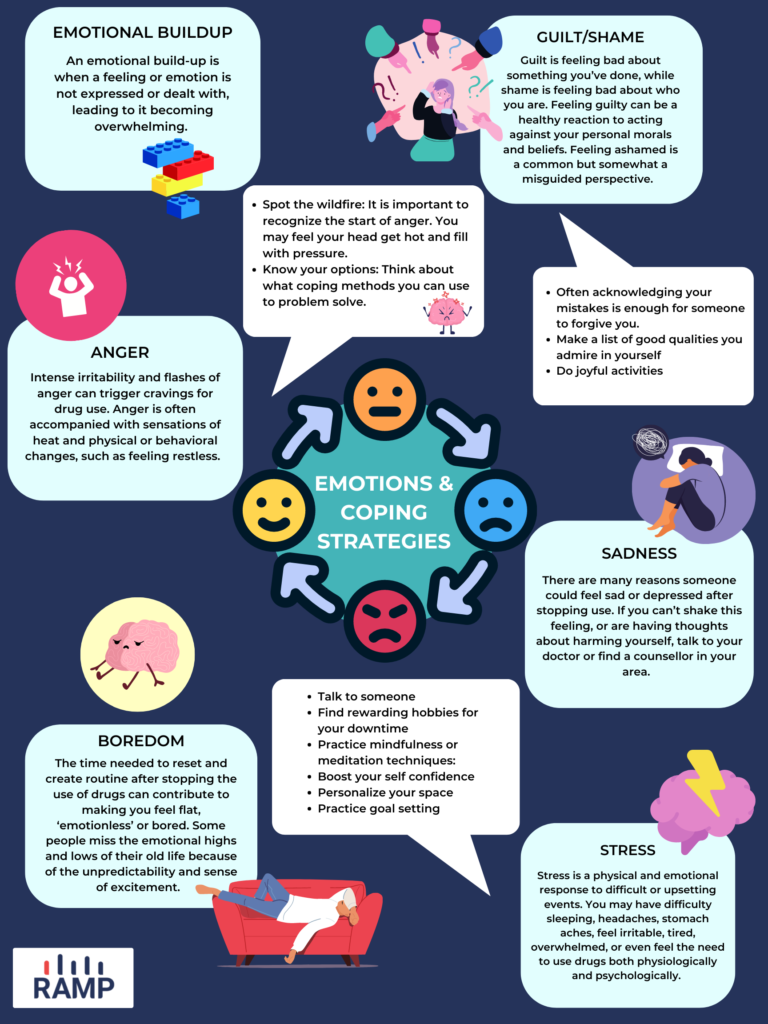Back to Module Intro
Risk Management
0% Complete
0/23 Steps
-
Introduction to Risk ManagementWhat is Risk Management?
-
Importance of Risk Management
-
How Do I Set a Goal?
-
Reflection Activity: What I Want and What is Important to Me
-
High-Risk SituationsWhat Can Lead to My Increased Risk
-
What Else Can Increase My Risk
-
Activity: What Are My Triggers
-
Activity: What Else Increases Risk?
-
Summary
-
CrisisWhat Is a Crisis?
-
What Are 5 Things I Can Do During a Crisis?
-
What Types of Support are Available and How Can I Access it?
-
Crisis Plan Worksheet
-
Development and GrowthWhat's Emotion Got To Do With It?
-
Activity: Self-Reflection
-
Summary: Emotions
-
What's Thoughts Got To Do With It?
-
What If I'm Craving To Use?
-
Activity: Coping Strategies
-
Summary: Thoughts
-
AnchorsWhat is Recovery?
-
What are Some Anchors of Recovery?
-
Activity: Substance Use Demotivators and Motivators + Pros and Cons of Recovery
In Progress
Lesson 14 of 23
In Progress
What’s Emotion Got To Do With It?
What’s Feeling Got to Do With It
0% Complete
0/23 Steps
Emotions are one of the main internal triggers, positive or negative, that can contribute to your increased risk. Here is a visualization of some of the emotions that you may experience:

